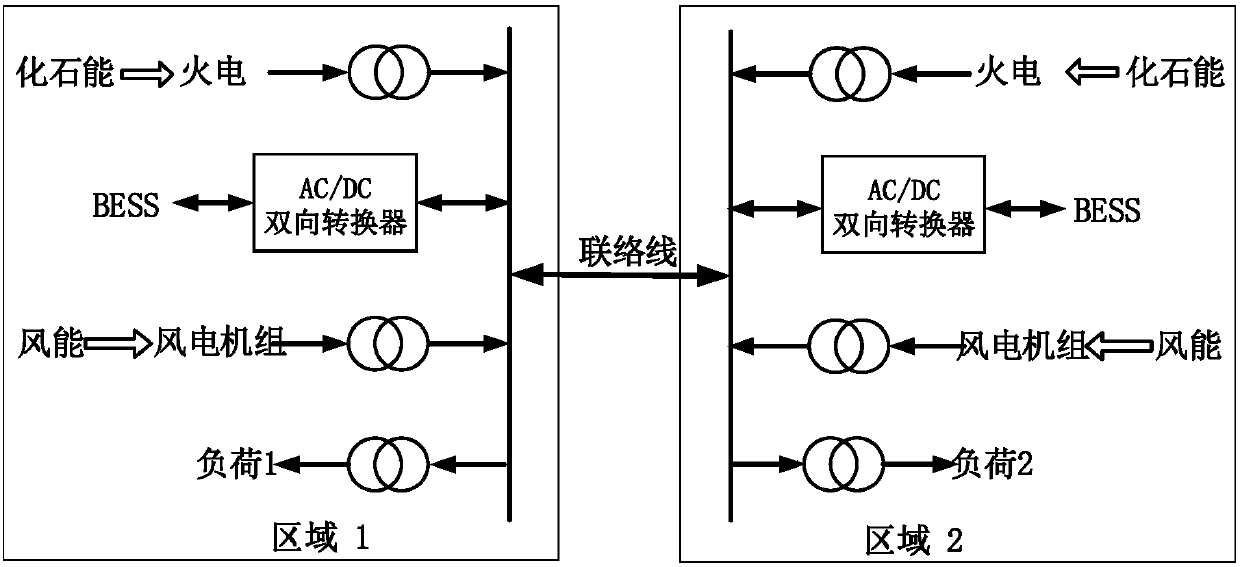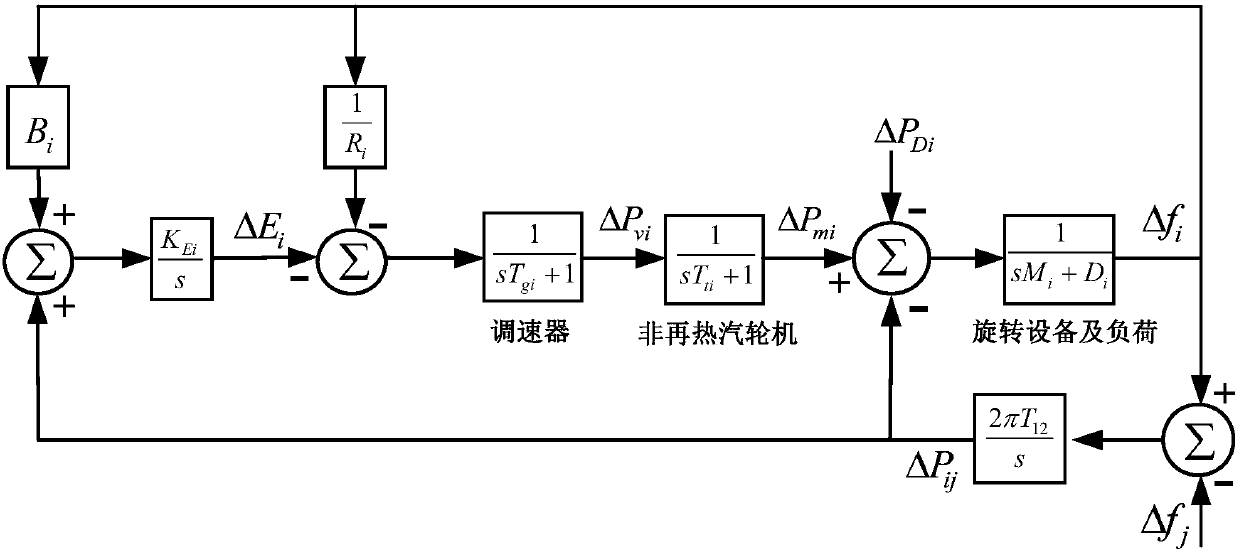Two-domain interconnection system load frequency control method based on frequency division control
A load frequency control and interconnection system technology, applied in the field of frequency control of two-domain interconnected systems, can solve the problems of not considering the control signal of the energy storage system, and the lack of precise control schemes for the design of thermal power units, so as to improve the ability of rapid response, fast response, The effect of improving accuracy
- Summary
- Abstract
- Description
- Claims
- Application Information
AI Technical Summary
Problems solved by technology
Method used
Image
Examples
Embodiment 1
[0151] Add such as Figure 6 Load and fan output power shown. Under the above-mentioned load and random fluctuation interference of wind power, the frequency deviation and tie line power deviation of the two regions are as follows: Figure 7 shown. This case compares a system that only includes frequency regulation of traditional thermal power units and a system that uses energy storage to assist frequency regulation of traditional units, where the control signal of the energy storage system only contains the high-frequency components of the LFC control signal.
[0152] Figure 7 The simulation results show that in the system where the energy storage system assists the frequency regulation of the traditional generator, the system frequency deviation in area 1 is maintained within ±0.2Hz, the system frequency deviation in area 2 is maintained within the range of ±0.17Hz, and the tie line power deviation It is 10MW (0.005p.u). However, when only traditional thermal power uni...
Embodiment 2
[0154] On the basis of Example 1, this case verifies the validity of the scheme considering the high-frequency component of the system active disturbance observation value as the BESS control signal. Figure 8 is the system active disturbance ΔP Di and the estimated value obtained by using the disturbance observer designed by the present invention It can be seen that the waveforms of the actual value and the observed value basically coincide, and the error is small. Whether to consider BESS The simulation results of the high-frequency component as the control signal are as follows: Figure 9shown.
[0155] according to Figure 9 The simulation structure shows that, When the high-frequency component of the BESS is used as the control signal of the BESS, that is, the BESS adopts Figure 5 In the control system shown, the system frequency deviations of area 1 and area 2 are effectively controlled within the range of ±0.12Hz, which effectively reduces the system frequency...
Embodiment 3
[0157] The traditional thermal power units in Embodiment 1 and Embodiment 2 all adopt traditional integral control. In order to improve the control accuracy of traditional thermal power units, a sliding mode load frequency controller u is added in the secondary frequency regulation link. In this case, the BESSs in both regions adopt Figure 5 In the control system shown, the simulation results of traditional integral control and sliding mode load frequency control for thermal power units are as follows: Figure 10 shown. When the traditional thermal power unit adopts the integral control, the system frequency deviation of area 1 and area 2 is basically maintained within the range of ±0.12Hz, while the frequency deviation of the two areas is maintained within ±0.05Hz after the sliding mode load frequency control is adopted. It can be seen that the sliding mode load frequency controller can effectively reduce the system frequency deviation and improve the robustness of the syst...
PUM
 Login to View More
Login to View More Abstract
Description
Claims
Application Information
 Login to View More
Login to View More - R&D
- Intellectual Property
- Life Sciences
- Materials
- Tech Scout
- Unparalleled Data Quality
- Higher Quality Content
- 60% Fewer Hallucinations
Browse by: Latest US Patents, China's latest patents, Technical Efficacy Thesaurus, Application Domain, Technology Topic, Popular Technical Reports.
© 2025 PatSnap. All rights reserved.Legal|Privacy policy|Modern Slavery Act Transparency Statement|Sitemap|About US| Contact US: help@patsnap.com



